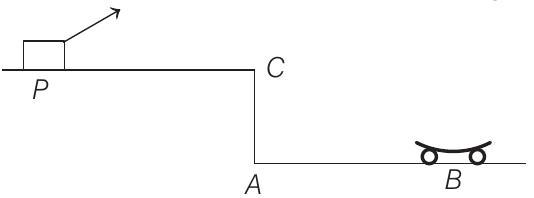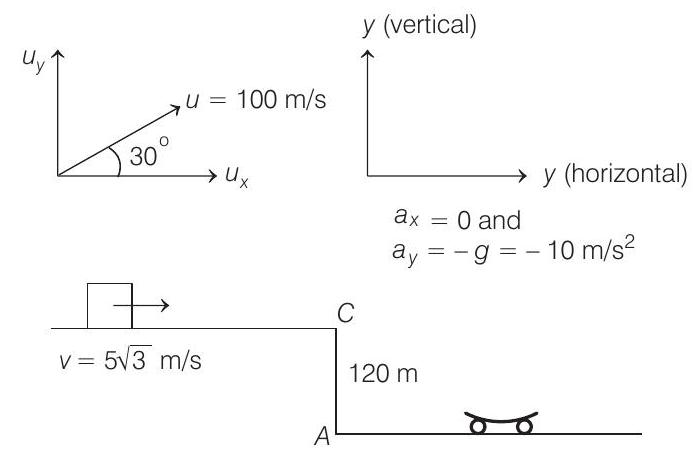Centre of Mass 4 Question 7
8. A car
If the second ball also hits and sticks to the carriage, what will be the horizontal velocity of the carriage just after the second impact?
(2011, 10M)

Show Answer
Answer:
Correct Answer: 8.
Solution:
- (a)
[Unless and until it is mentioned in the question, the velocity is always relative to ground]

Horizontal component of velocity of cannon ball,
or
and vertical component of its velocity,
Vertical displacement of the ball when it strikes the carriage is
Ignoring the negative time, we have
(b) When it strikes the carriage, its horizontal component of velocity is still
(mass of ball) (horizontal component of its velocity before collision
The second ball is fired when the first ball strikes the carriage i.e. after
The second ball also takes
Horizontal component of velocity of ball

In this particular problem, values are so adjusted that even if we take the velocity of ball with respect to car, we get the same results of both the parts, although the method will be wrong.






